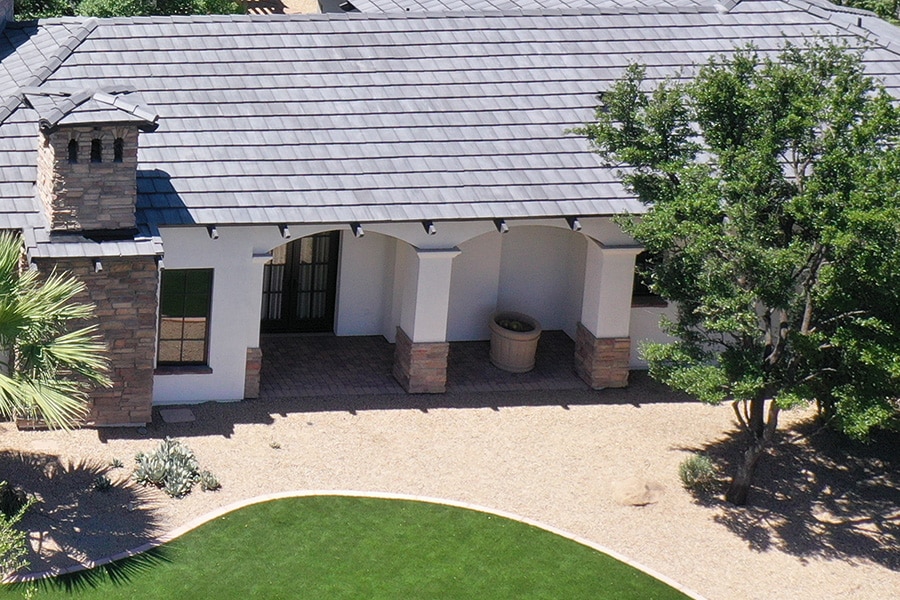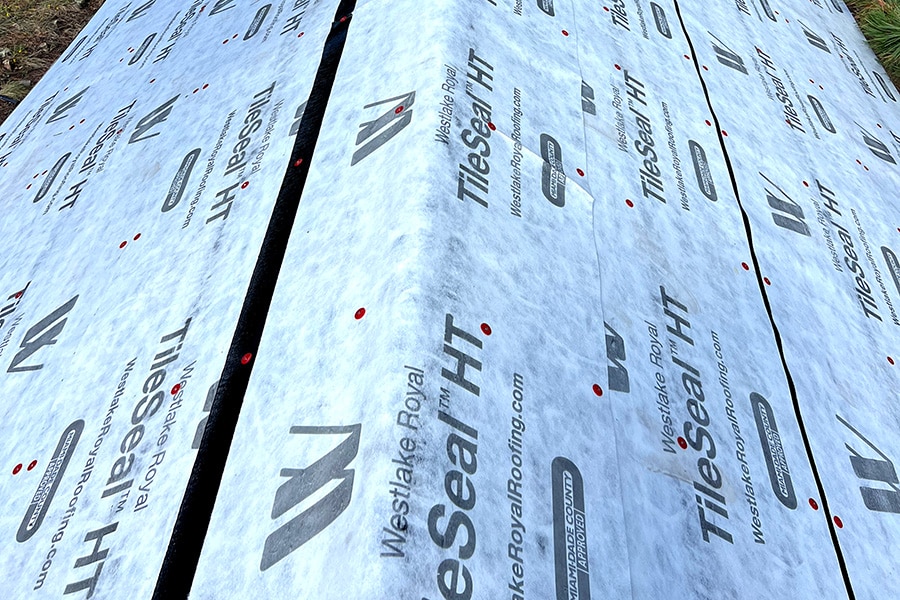Arizona sees over 300 days of sunshine every year. With the sunshine comes temperatures over 100 degrees, excessive heat, and a significant amount of UV rays that are absorbed. While several types of roofing materials are used throughout the East Valley, the most common roof style is tile. They withstand the Arizona sun and have long lifespans, are environmentally friendly, low maintenance, energy-efficient, and stylish.
One of the main contributors to a successful tile roof is the underlayment.
Understanding your roofing system and the need for a quality underlayment will ensure your tile roof lasts for many years to come. Craven Construction is a tile roof installer located in the East Valley with over two decades of experience. We are here today to discuss tile roof underlayment, the different options available to you, factors to consider when choosing one, how long it should last, and signs your underlayment needs to be replaced.
What is Underlayment?
Underlayment is considered a second line of defense against the elements of a tile roofing system. This water-resistant material is installed between the roof deck and tiles and is typically applied in one or two layers. In the event a few tiles crack or slip, the underlayment provides necessary protection.
Types of Underlayment
There are two types of underlayment that roofers will use with tile roofs; asphalt felt and synthetic. We’re going to explain the two here:
1. Asphalt Felt Underlayment
Asphalt felt has been traditionally used as a tile roof underlayment. It is created through a process of soaking a base material in asphalt to create a water-resistant barrier. The primary advantage of an asphalt felt underlayment is its cost is much less than synthetic. Felt underlayment comes with several disadvantages including being prone to tearing, it cannot be exposed for more than a few hours to the elements, and it can easily dry out in the heat.
2. Synthetic Underlayment
A more lightweight option for underlayment that has increased in popularity in recent years. Created by weaving polypropylene or polyethylene and a polymer to form a protective roofing material. Synthetic underlayment comes with more advantages is the superior choice. The advantages include being extremely durable and withstanding the harshest of the Arizona climate, increased tear resistance, being attached securely to the home, and will retain less heat.
Factors To Consider
Choosing the best underlayment for a tile roof can be difficult, but there are several factors that you may consider when choosing.
- Budget: Budget is often a driving force of many decisions. There are several weights of underlayment available from several different providers. If budget is of concern, talk with your local roofer about what might be the best option for your tile roof.
- Local Climate: As we said before, synthetic underlayment is the best option for the Arizona climate. It can withstand the heat and won’t dry out if exposed as well as being water and UV resistant.
- Quality: When choosing an underlayment, investing in quality will more than pay for itself in the time it is on your roof. Be sure to discuss the manufacturer warranty with your local roofer. A competitive warranty is a good sign of quality and a reputable provider. Your roofing contractor may offer an additional warranty to cover labor, but not all do so be sure to ask.

How Long Does Underlaymet Last?
A quality tile roof underlayment that is installed by the licensed contractor should last approximately 20 years. This timeframe is based on the upkeep and maintenance of the roof, weather patterns, and other elements that can shorten or lengthen its life. Proper underlayment replacement will help your tiles live up to their expected lifespan of approximately 50 years.
Signs The Underlayment Needs Replaced
Weather and age can take a toll on a roofing system. Below are a few key signs that your underlayment is telling you it is time for replacement.
- Leaking Roof: If your roof is leaking, it is a clear sign that the underlayment has been compromised and in need of replacement.
- Missing or Damaged Tiles: Tiles that are missing or damaged will expose the underlayment to the elements. The longer you leave it unprotected, the higher the risk of extensive damage.
- Age: Sometimes, age is the determining factor in choosing to get the underlayment replaced for your tile roof. If you have not had the underlayment replaced in the last 20 years and your tile roof has not been inspected by a professional, we recommend having someone look at it sooner rather than later. They will be able to offer an estimated age of the underlayment along with when you will want to have it replaced.
Your Trusted Tile Roofing Expert
Craven Construction is here for all of your tile roof and underlayment needs. Our team has over 20 years of experience with tile roofing systems and we are licensed and insured for added peace of mind when hiring us. Call our office to schedule a FREE estimate and trust your home to be in good hands.
Does Your Underlayment Need Replaced?
About Craven Construction
Craven Construction is dedicated to providing our customers with honest and reliable roofing services. With over two decades of residential and commercial experience, we are here to serve you and all of your roofing needs.
Our team of experienced roofers is licensed and knowledgeable in working with all types of roofing. We offer high quality roofing services and are capable of getting your project completed in a timely, efficient manner.

